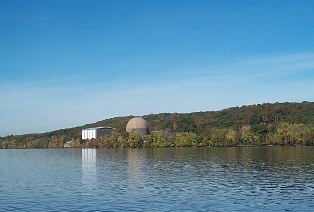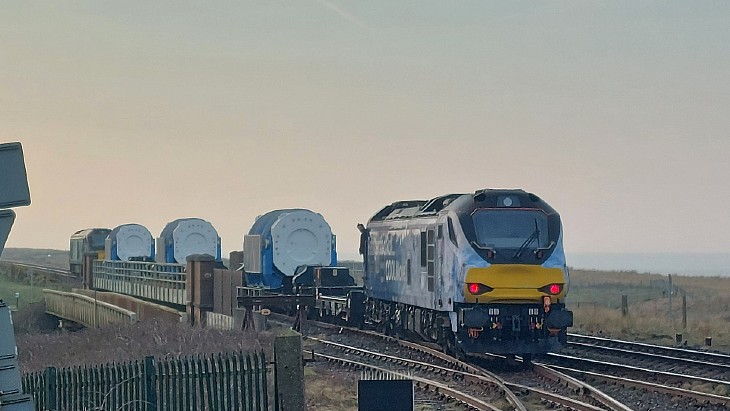Connecticut Yankee decommissioning complete
Tuesday, 27 November 2007
 Most of the Connecticut site formerly occupied by a nuclear power reactor that started decommissioning at the end of 1996 has been released for unrestricted public use.
Most of the Connecticut site formerly occupied by a nuclear power reactor that started decommissioning at the end of 1996 has been released for unrestricted public use.
Most of the Connecticut site formerly occupied by a nuclear power reactor that started decommissioning at the end of 1996 has been released for unrestricted public use.
Most of the Connecticut site formerly occupied by a nuclear power reactor that started decommissioning at the end of 1996 has been released for unrestricted public use.
 The Connecticut Yankee nuclear power plant at Haddam Neck entered commercial operation in 1968 and generated over 110 billion kWh of electricity over 28 years of operation. The immediate dismantlement, or so-called DECON method, was used for decommissioning the plant. This involves the removal or decontamination of equipment, structures, and portions of the facility and site containing radioactive contaminants to a level such that the property can be released for unrestricted use. It is the only one of the three decommissioning alternatives approved by the Nuclear Regulatory Commission (NRC) that leads to termination of the facility licence and release of the facility and site for unrestricted use in the relatively short timescale of a decade or less.
The Connecticut Yankee nuclear power plant at Haddam Neck entered commercial operation in 1968 and generated over 110 billion kWh of electricity over 28 years of operation. The immediate dismantlement, or so-called DECON method, was used for decommissioning the plant. This involves the removal or decontamination of equipment, structures, and portions of the facility and site containing radioactive contaminants to a level such that the property can be released for unrestricted use. It is the only one of the three decommissioning alternatives approved by the Nuclear Regulatory Commission (NRC) that leads to termination of the facility licence and release of the facility and site for unrestricted use in the relatively short timescale of a decade or less.
Significant decommissioning activities began at Connecticut Yankee in May 1998 and were completed in July 2007.
According to the NRC, the residual contamination on the land is below regulatory requirements allowing a maximum dose of 25 millirem per year (0.25 mSv) - one twelfth of the dose received by the average US citizen from background radiation in one year.
"A member of the public can live, sleep and eat at the site, 365 days a year and 24 hours a day, and not be subjected to unsafe levels of radiation," according to press reports citing NRC spokesman Neil Sheehan.
A small part of the former plant site, hosting the dry cask storage facility where some 1000 used nuclear fuel rods from the reactor's operating life plus some contaminated metals are kept, remains under NRC licence. Connecticut Yankee retains responsibility for the security and protection of the storage facility's five-acre (two-hectare) site until a national used nuclear fuel disposal facility is available, when it would be removed.
No decisions have yet been made on future uses for the released site, although the local town and state have reportedly expressed interest in acquiring some or all of the woodland site for open space and recreation use. The possible siting of a new non-nuclear power plant has also been mooted.
The Connecticut Yankee site at Haddam Neck is not to be confused with other US reactors called Yankee. Vermont Yankee remains in operation, but two other Yankees have also been decommissioned. The majority of the Maine Yankee nuclear power plant site was released for public use in 2005, and most of the Yankee Rowe site was also released for public use earlier this year. According to the NRC, a further 15 civil nuclear reactors are currently undergoing decommissioning in the USA.
Further information
ConnecticutYankee
Nuclear Regulatory Commission
 Most of the Connecticut site formerly occupied by a nuclear power reactor that started decommissioning at the end of 1996 has been released for unrestricted public use.
Most of the Connecticut site formerly occupied by a nuclear power reactor that started decommissioning at the end of 1996 has been released for unrestricted public use. The Connecticut Yankee nuclear power plant at Haddam Neck entered commercial operation in 1968 and generated over 110 billion kWh of electricity over 28 years of operation. The immediate dismantlement, or so-called DECON method, was used for decommissioning the plant. This involves the removal or decontamination of equipment, structures, and portions of the facility and site containing radioactive contaminants to a level such that the property can be released for unrestricted use. It is the only one of the three decommissioning alternatives approved by the Nuclear Regulatory Commission (NRC) that leads to termination of the facility licence and release of the facility and site for unrestricted use in the relatively short timescale of a decade or less.
The Connecticut Yankee nuclear power plant at Haddam Neck entered commercial operation in 1968 and generated over 110 billion kWh of electricity over 28 years of operation. The immediate dismantlement, or so-called DECON method, was used for decommissioning the plant. This involves the removal or decontamination of equipment, structures, and portions of the facility and site containing radioactive contaminants to a level such that the property can be released for unrestricted use. It is the only one of the three decommissioning alternatives approved by the Nuclear Regulatory Commission (NRC) that leads to termination of the facility licence and release of the facility and site for unrestricted use in the relatively short timescale of a decade or less. Significant decommissioning activities began at Connecticut Yankee in May 1998 and were completed in July 2007.
According to the NRC, the residual contamination on the land is below regulatory requirements allowing a maximum dose of 25 millirem per year (0.25 mSv) - one twelfth of the dose received by the average US citizen from background radiation in one year.
"A member of the public can live, sleep and eat at the site, 365 days a year and 24 hours a day, and not be subjected to unsafe levels of radiation," according to press reports citing NRC spokesman Neil Sheehan.
A small part of the former plant site, hosting the dry cask storage facility where some 1000 used nuclear fuel rods from the reactor's operating life plus some contaminated metals are kept, remains under NRC licence. Connecticut Yankee retains responsibility for the security and protection of the storage facility's five-acre (two-hectare) site until a national used nuclear fuel disposal facility is available, when it would be removed.
No decisions have yet been made on future uses for the released site, although the local town and state have reportedly expressed interest in acquiring some or all of the woodland site for open space and recreation use. The possible siting of a new non-nuclear power plant has also been mooted.
The Connecticut Yankee site at Haddam Neck is not to be confused with other US reactors called Yankee. Vermont Yankee remains in operation, but two other Yankees have also been decommissioned. The majority of the Maine Yankee nuclear power plant site was released for public use in 2005, and most of the Yankee Rowe site was also released for public use earlier this year. According to the NRC, a further 15 civil nuclear reactors are currently undergoing decommissioning in the USA.
Further information
ConnecticutYankee
Nuclear Regulatory Commission
Most Read
_17992.jpg)
Moltex reactor can consume used fuel, research confirms
Friday, 4 October 2024
_75800.jpg)
UK opts for disposal of plutonium inventory
Friday, 24 January 2025

Canada selects location for used nuclear fuel repository
Thursday, 28 November 2024

Second-last high level waste shipment departs UK for Germany
Friday, 28 March 2025
Podcasts & Features
Podcast: World Nuclear Fuel Cycle 2025
Podcasts & Features Wednesday, 23 April 2025





_50521.jpg)


